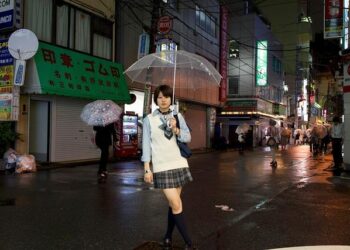Span has designed a new identity for Chicago’s Nature Museum, taking inspiration from Illinois’s native prairies. Ecologists consider these ecosystems part of the temperate grasslands, savannas, and shrublands biome.
The Peggy Notebaert Nature Museum – the institution’s full title – is Chicago’s oldest museum and one of America’s earliest scientific institutions, housed in the Perkins and Will building, which is set within a restored native prairie. Organizationally, the Nature Museum is also part of the 167-year-old Chicago Academy of Sciences, meaning there were some complexities to consider when designing its new identity.
“We rose to the occasion, developing an identity characterised by its adaptability, tailored to thrive in diverse settings, whether advising corporations on sustainability initiatives or fostering a new generation of nature enthusiasts”, says Span associate partner and design director Nick Adam.


It has become commonplace for brands to turn to colour palettes of green, beige and brown hues to signify environmental consciousness (many of which are simply greenwashing). However, Span noticed this approach is somewhat counterintuitive, as nature seldom adheres to such simple and monotonous colour schemes.
Instead, the studio took influence from Illinois’s native prairies, resulting in a “vibrant tapestry of hues”, from “the brilliant yellow of the Compass flower to the rich magenta of the Columbine”, says Adam. “Drawing inspiration from our walks through the Midewin National Tallgrass Prairie, the palette for the Nature Museum reflects this diversity and beauty, often combining colours in unexpected ways, much like the intricate harmony found in a prairie ecosystem”, he adds.
Another key consideration was that the identity had to appeal to scientists and researchers who might be interested in the Chicago Academy of Sciences as well as visitors to the Nature Museum. Feedback from surveys conducted among the leadership, staff, and visitors indicated that the logo appeared to cater exclusively to children, was often described as overly intricate and confusing, and was even likened to “rainbow roadkill” by some respondents.



Span opted to convey a sense of dynamism, activity, and inspiration for the Nature Museum’s brand to reflect its lively atmosphere. At the same time, the Chicago Academy of Sciences side of the identity featured more subdued colours and branding assets, aligning with its academic focus. “By decoupling the Chicago Academy of Sciences’ logo, we achieved a visual distinction while ensuring that the website design maintains a cohesive aesthetic, allowing for less expressiveness in pages associated with the Academy, yet maintaining a clear visual connection to the Nature Museum”, Adam explains.
The aim was to repair the previously ambiguous and disconnected relationship between the Chicago Academy of Sciences and the Nature Museum, which partly stemmed from the disparate fonts used in the logo. “There was a nomenclature issue, with the names of the two entities simply placed side by side,” says Adam. Span addressed this by introducing the phrase ‘of the’ to clarify that the Nature Museum is a component of the Chicago Academy of Sciences.
When working on the project in the summer of 2023, Adam came across Céline Hurka’s newly released typeface Sweetlily, which he describes as “a variable font intertwining flowers with letterforms” that also has traces of “a sophisticated sans-serif style with flared stems”. Hurka had also released the base letterforms of Sweetlily as a font called Tonka, characterised by its “inky quality and flaring, combined with a contemporary humanistic, geometric structure”, according to Adam.


Since the museum is more like an ecosystem than an isolated entity, Span sought to include attributions to its founder and the Chicago Academy of Sciences. So, elements of the logotype were set in New Atten, a humanistic sans-serif with classical proportions and capitals inspired by the Roman inscriptional form of the Trajan Column carved in 113 AD.
“This blend of old and new, historic and relevant, natural and digital perfectly encapsulated the essence of the Nature Museum,” says Adam.
He explains that, while there is often caution against using two typefaces from the same category, the pairing of Tonka and New Atten proved to be “harmonious” thanks to their shared qualities and differences. Adam had also learnt from an article in The Independent that Miles Newlyn based TP Atten (the original drawing of New Atten) on the voice of naturalist Sir David Attenborough, making it a perfect match for both the Nature Museum and the Chicago Academy of Sciences.



All of this was built in response to several key objectives, including conveying the Museum’s leadership in nature, science, conservation and experiential learning, appealing to all ages, establishing a connection between the Museum’s past, present, and future and effectively encapsulating its brand essence, which revolves around connections, wonder, nature, and inspiration.
“By addressing these points, we designed a visual identity that not only reflected the Museum’s core values and aspirations but also resonated with its diverse audience and supported its overarching goals,” says Adam.
>>> Read full article>>>
Copyright for syndicated content belongs to the linked Source : CreativeBoom – https://www.creativeboom.com/news/span-identity-chicagos-nature-museum/















![[News] Japan Develops 10nm Nanoimprint Technology, with Potential to Tackle EUV Bottleneck – TrendForce](https://earth-news.info/wp-content/uploads/2025/12/329851-news-japan-develops-10nm-nanoimprint-technology-with-potential-to-tackle-euv-bottleneck-trendforce-360x180.jpg)















